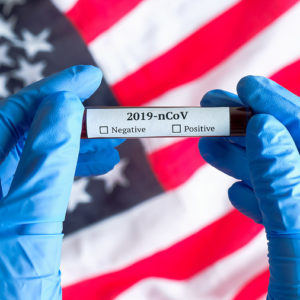The chair of the Montgomery County commissioners said Wednesday that residents who are able to be vaccinated in “Phase 1A” for the COVID-19 vaccine may have to wait up to a year for their shots because of changes in the qualifications.
Distribution of the vaccine is broken out into different phases: 1A, 1B, 1C, and then progressing to stage 2.
Previously, 1A meant those in long-term care facility residents and health care workers. The changes now include anyone ages 65 and older. It also includes anyone between the ages of 16 and 65 with underlying medical conditions known to be linked to severe cases fo COVID-19. The changes from the state department of health earlier in the week were made to align with federal guidelines.
“The Pennsylvania Department of Health changes to the vaccine eligibility announced yesterday dramatically expanded the eligible group of residents in Montgomery County,” Chairwoman Dr. Valerie Arkoosh said. “However there has been no comparable increase in the amount of vaccine we are receiving.”
The expanded definitions allow an estimated 250,000 additional residents of Montgomery County to get the vaccine in phase 1A. However, Arkoosh noted Montgomery County has only received 17,000 doses so far and has administered about 1,000 a day. This means they have given out about 10,000 doses and by the time of their next shipment they will be down to only about 1,800.
“I am not happy about this situation,” Arkoosh said. “I was comfortable with the original vaccine allocation plan because I thought it did a good job of balancing — and it’s always a balancing act — older people who we know are more likely to die from the coronavirus with people who are more likely to get the coronavirus.”
The new eligibility guidelines will delay vaccines for essential workers, which in turn creates problems for communities of color who are being affected at a more drastic rate from the coronavirus.
“When it comes to the communities of color, across ages, black individuals are more likely to die of coronavirus,” Arkoosh said. “In many cases the rates are higher in those communities because individuals are working in jobs that put them in a public facing type situation. The inequities here are deeply and profoundly concerning to me.”
Vice chairman Ken Lawrence lamented the fact that people identified as essential workers will lose access to the vaccine, while others who never have to leave their homes are now eligible.
“It just does not make sense to me that people that might be able to stay home and can monitor for those appointments will be getting it now,” Lawrence said. “We need a lot more vaccine. For a lot of people who have been working during this pandemic who can’t stay home, they will not be getting vaccinated now.
Arkoosh has hope that the new Johnson and Johnson vaccine, which is only one dose, will come into play soon. The “rosiest of scenarios” Arkoosh hoped for would be Johnson and Johnson submitting for approval for emergency use authorization by the FDA sometime in early February. Approval would then take about a month and distribution would hopefully start in early March.
For the foreseeable future, however, Arkoosh thinks distribution will stay on its current track, with Montgomery County receiving just 5,000 doses a week.
“Under these new guidelines, if you are in the 1B or 1C categories only because of your job, it’ll be some number of months to have enough vaccine to vaccinate you,” Arkoosh said.

